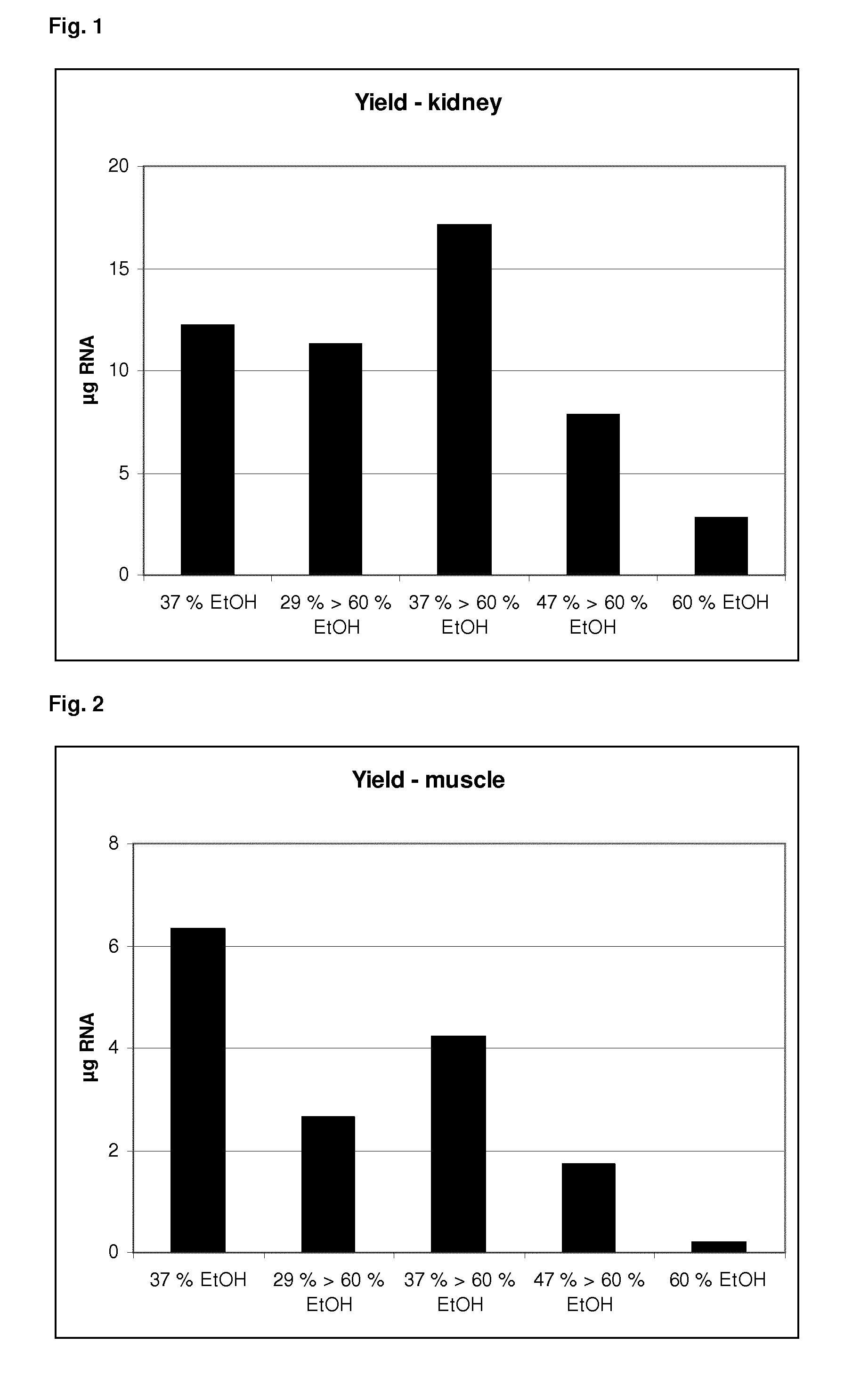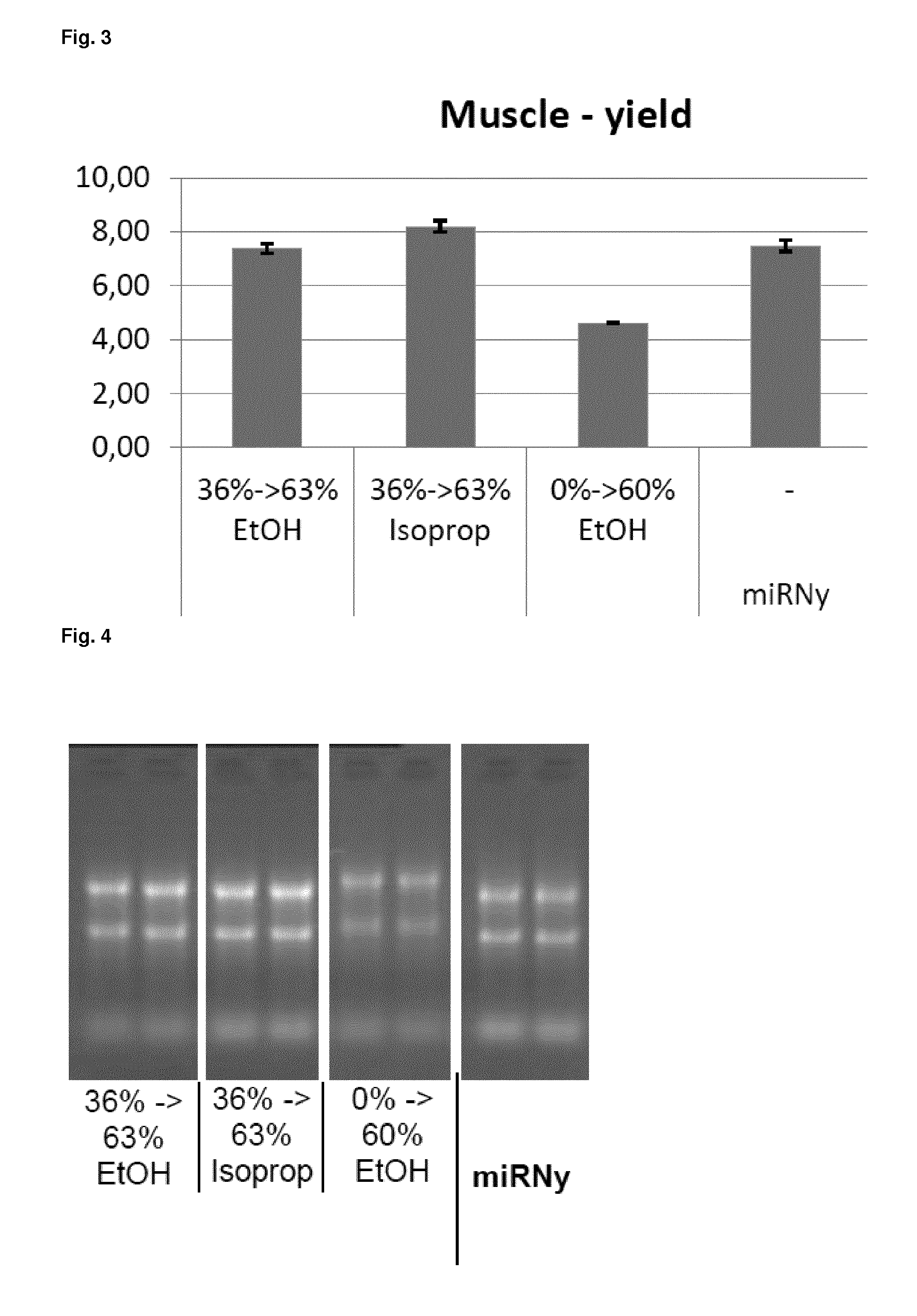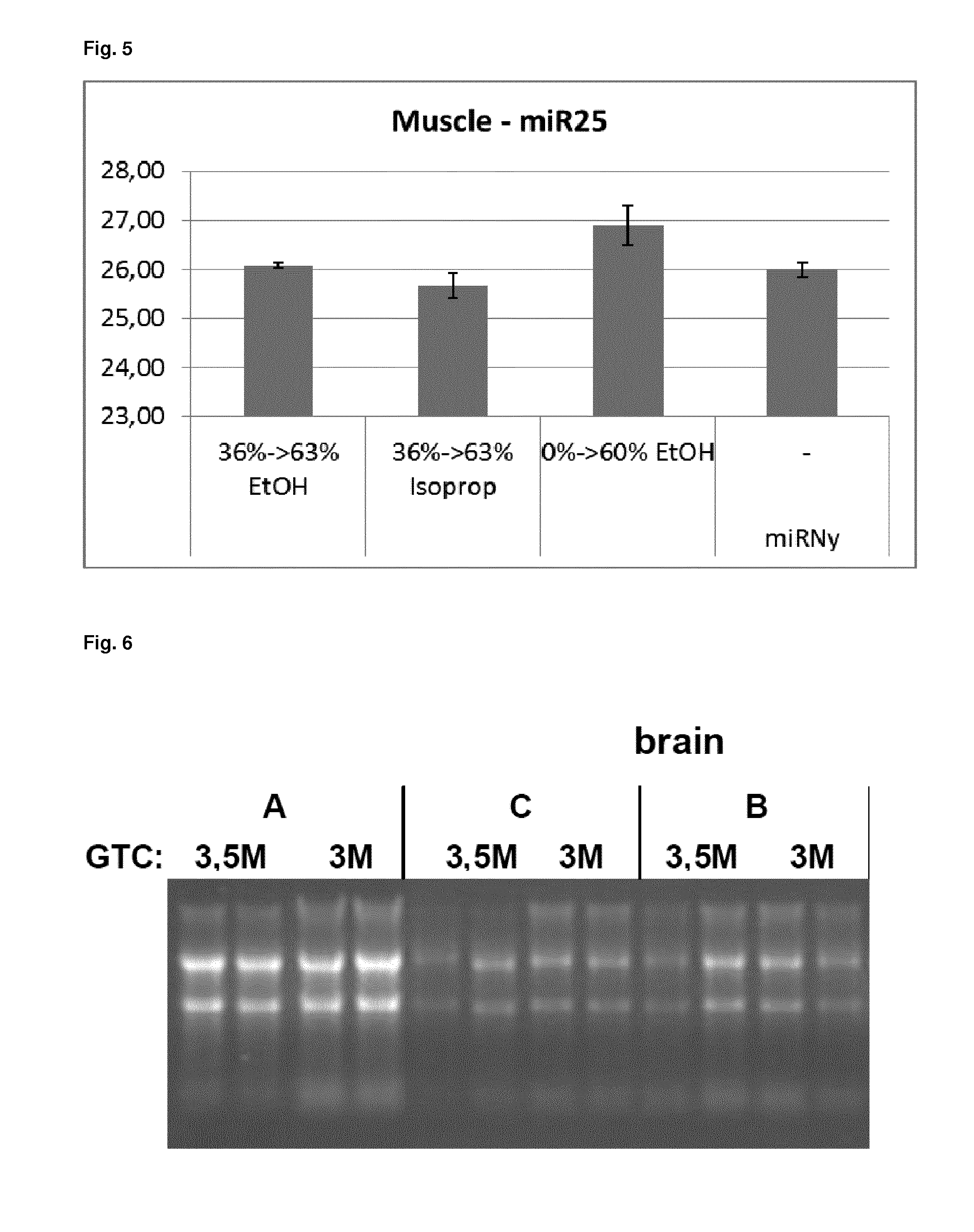Method for isolating RNA including small RNA with high yield
- Summary
- Abstract
- Description
- Claims
- Application Information
AI Technical Summary
Benefits of technology
Problems solved by technology
Method used
Image
Examples
example 1
RNA Using Magnetic Silica Particles
[0127]RNA was isolated from different tissue samples using the method according to the present invention. As tissue samples, 10 mg rat kidney or 20 mg rat muscle was processed per preparation. The protocol according to the present invention was performed as follows:
[0128]The tissue sample was lysed and homogenized in a lysis buffer with a concentration of 3,5 M of a guanidinum salt and non-ionic detergents (less than 5%).
[0129]The homogenized and lysed sample was then transferred to a robotic system capable of processing magnetic beads (QIAsymphony (QIAGEN)). 20 μl proteinase K and 50 μl magnetic silica beads (MagAttract G, QIAGEN) was added. The addition steps can be done in any order.
[0130]Afterwards, a first amount of ethanol was added thereby providing a mixture comprising ethanol in different concentrations (29% (v / v), 37% (v / v) or 47% (v / v)). The resulting mixture was incubated and mixed for 5 minutes at room temperature. During said incubati...
example 2
tion Using a Column Based Approach
[0138]RNA including small RNAs was purified from 10 mg of RNALater stabilized rat muscle tissue using the method according to the present invention. The isolation procedure was as follows:
[0139]Preparation of the Lysate
[0140]10 mg tissue is homogenized in 350 μl of a chaotropic agent containing buffer (RLTplus, QIAGEN plus beta-mercaptoethanol) using a rotor stator, polytron or bead mill.
[0141]Removal of DNA
[0142]350 μl of the lysates were applied to Allprep-DNA-spin columns and centrifuged for 1 minute at 14.000 rpm. Thereby, genomic DNA (but not the RNA) is bound to the spin column and the flow-through can be used for RNA preparation. If desired, the bound DNA can also be further processed in order to provide the DNA as separate fraction. Thus, this protocol also allows the parallel isolation of DNA and RNA from one sample. In this experiment, the DNA was not further processed, but discarded.
[0143]Isolation of RNA
[0144]The RNA is isolated from the...
example 3
of RNA from Different Tissues Using a Column-Based Approach
[0151]The method according to the present invention (see example 2) was compared to different protocols, processing brain, heart and liver samples.
[0152]RNA from heart, brain and liver tissues was isolated using the method according to the present invention with a proteinase K digestion of the RNA containing flow-through and a stepwise alcohol addition (see example 2) or different variations. The lysis buffer was used with concentrations of 3.5 M GTC and 3 M GTC for purification. The following variations were tested:
[0153]Variation (A) (invention): 50 μl proteinase K is added prior to dilution with 0.66 volumes of ethanol. The indicated volume of ethanol refers to the volume of the lysate / flow-through that is present prior to adding the proteinase K.
[0154]Variation (B): 50 μl proteinase K is added prior to dilution with 0.166 volumes of H2O. The indicated volume of ethanol refers to the volume of the lysate / flow-through that...
PUM
| Property | Measurement | Unit |
|---|---|---|
| Temperature | aaaaa | aaaaa |
| Temperature | aaaaa | aaaaa |
| Fraction | aaaaa | aaaaa |
Abstract
Description
Claims
Application Information
 Login to View More
Login to View More - R&D
- Intellectual Property
- Life Sciences
- Materials
- Tech Scout
- Unparalleled Data Quality
- Higher Quality Content
- 60% Fewer Hallucinations
Browse by: Latest US Patents, China's latest patents, Technical Efficacy Thesaurus, Application Domain, Technology Topic, Popular Technical Reports.
© 2025 PatSnap. All rights reserved.Legal|Privacy policy|Modern Slavery Act Transparency Statement|Sitemap|About US| Contact US: help@patsnap.com



